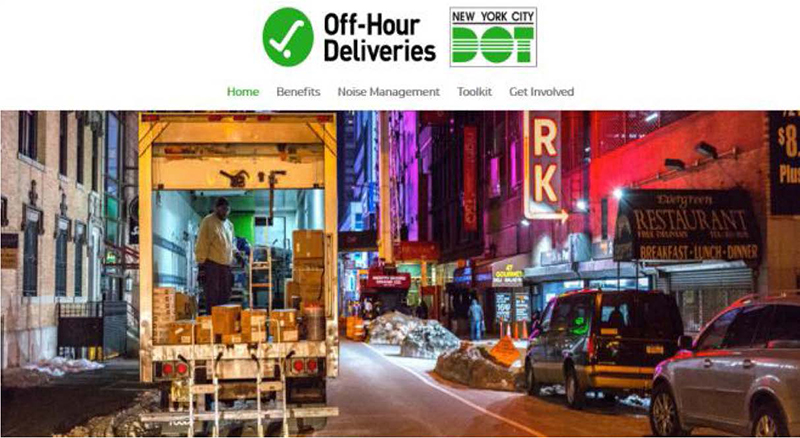United States - European Commission Urban Freight Twinning Initiative: Compendium of Project Summaries, Volume II
Overview of 2018-2019 International Urban Freight Roundtables
| Policy | Pilot | United States |
New York City Off-Hour Deliveries Program
Due to the success of the pilot program, NYCDOT is now seeking additional transporters and receivers to rethink their delivery schedule and shift to off-hour deliveries (OHDs). The OHD program is intended to increase the number of deliveries between 7:00 p.m. and 6:00 a.m. within NYC, specifically Midtown and Lower Manhattan and the downtown areas of Brooklyn, Flushing, and Jamaica where there are high pedestrian volumes and limited curb space. DOT has made critical steps to expand the program, including, but not limited to, the development of an OHD program brand and marketing strategy, a dedicated program website, tailored program implementation guides for receivers and transporters, and noise mitigation. DOT also developed an OHD Recognition Program to foster behavior change by publicly spotlighting companies engaged in OHD best practices.
Project Types
Policy, Pilot.
Period of Performance
Ongoing since Spring 2019.
Project Site
New York City, New York, USA.
Contact
Diniece Mendes
Director, Office of Freight Mobility
New York City Department of Transportation
New York, New York
DPeters@dot.nyc.gov
(212) 839-7704
Topics Addressed
- Air quality/environment.
- Curbside delivery.
- Last mile delivery.
- Off-hours delivery.
- Safety.
Expected Outcomes
Expand the OHD program to 900 new food and non-food retail locations in targeted areas throughout NYC. This is expected to reduce truck traffic and congestion at peak hours, improve business operations, and improve air quality in the city.
Stakeholder Involvement
NYCDOT Office of Freight Mobility engages the trucking industry at large, supply chain managers, transporters, and receivers in key industries (food and non-food retail). These companies also have vertically integrated supply chains, making it easier to implement OHD into their operations.
